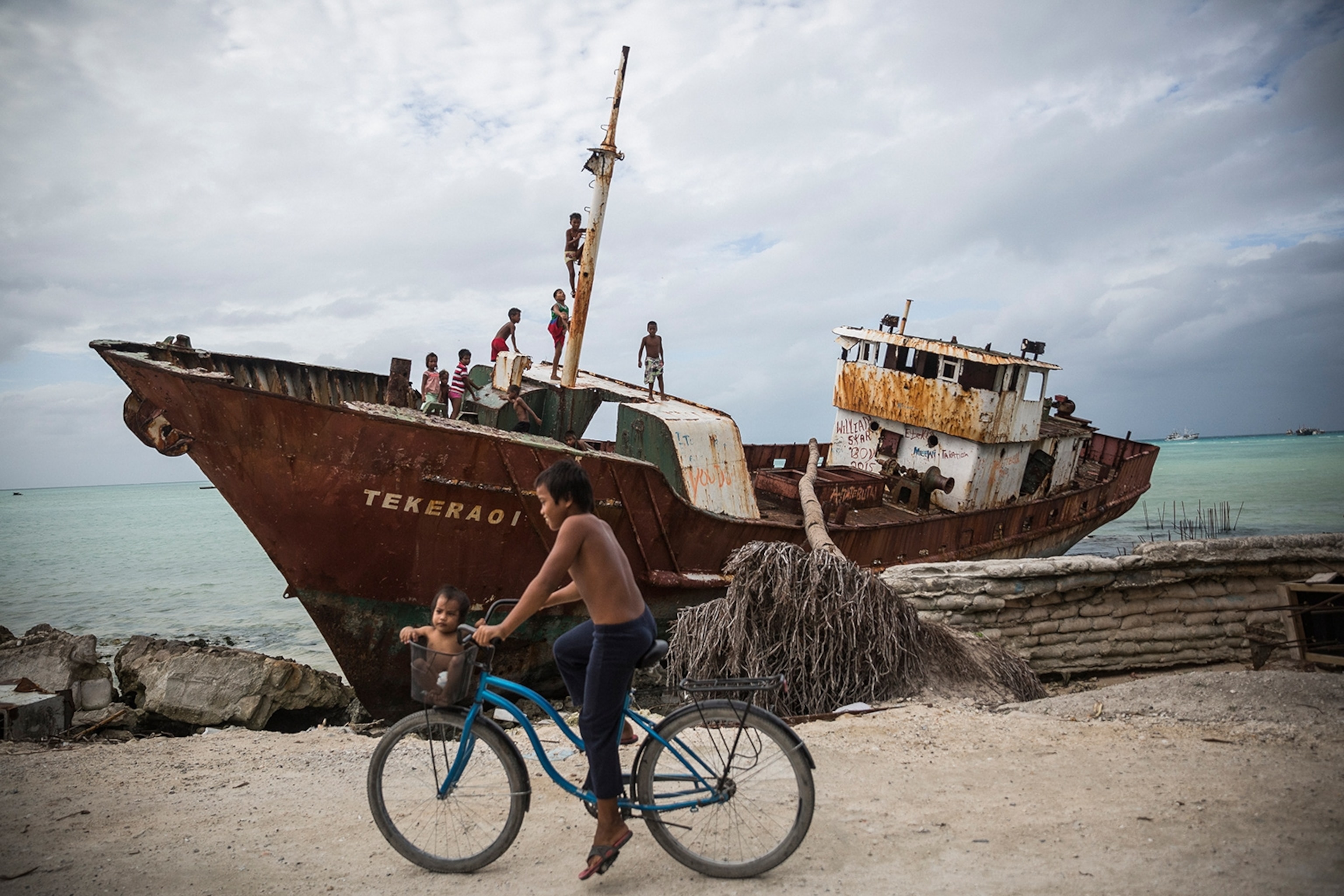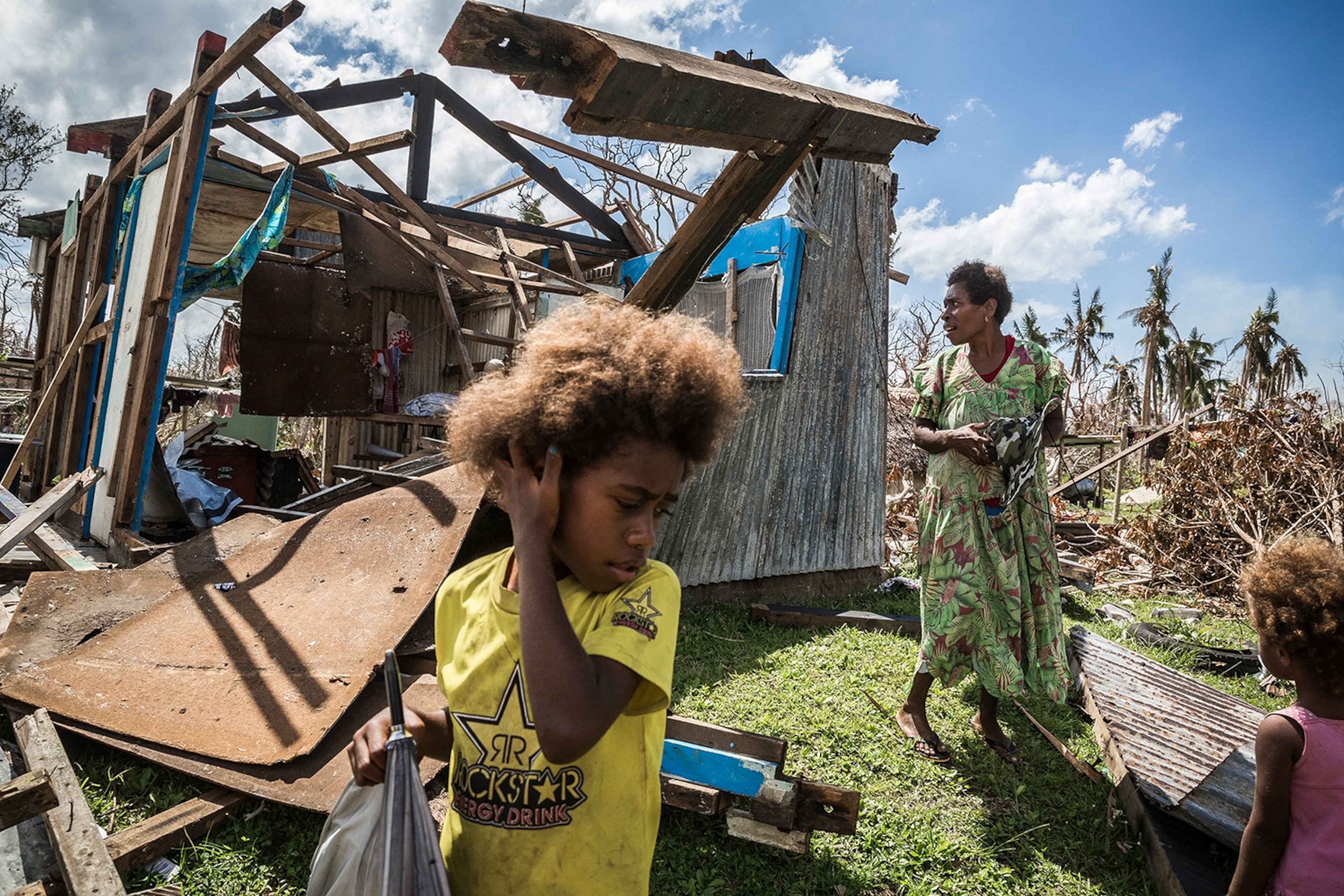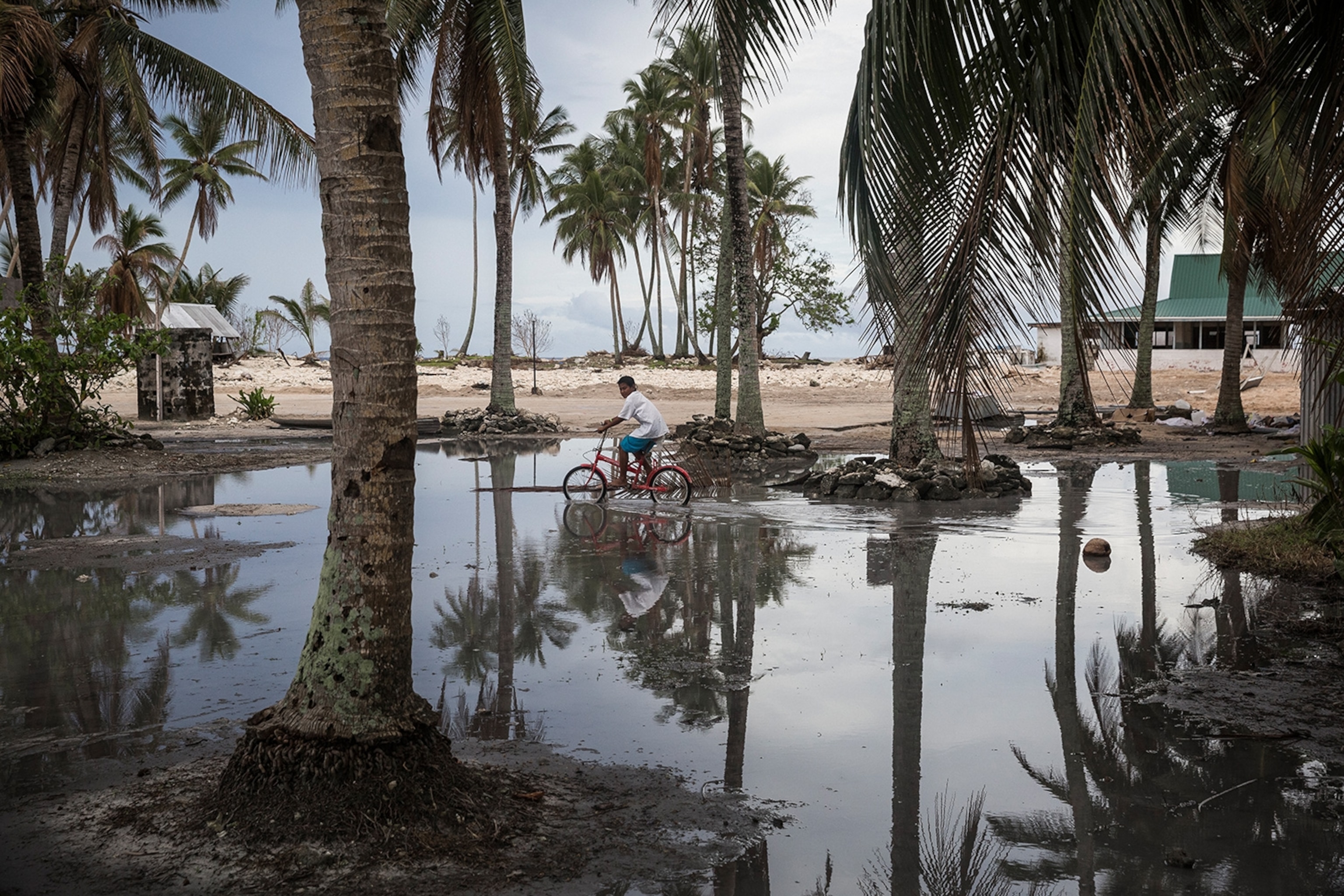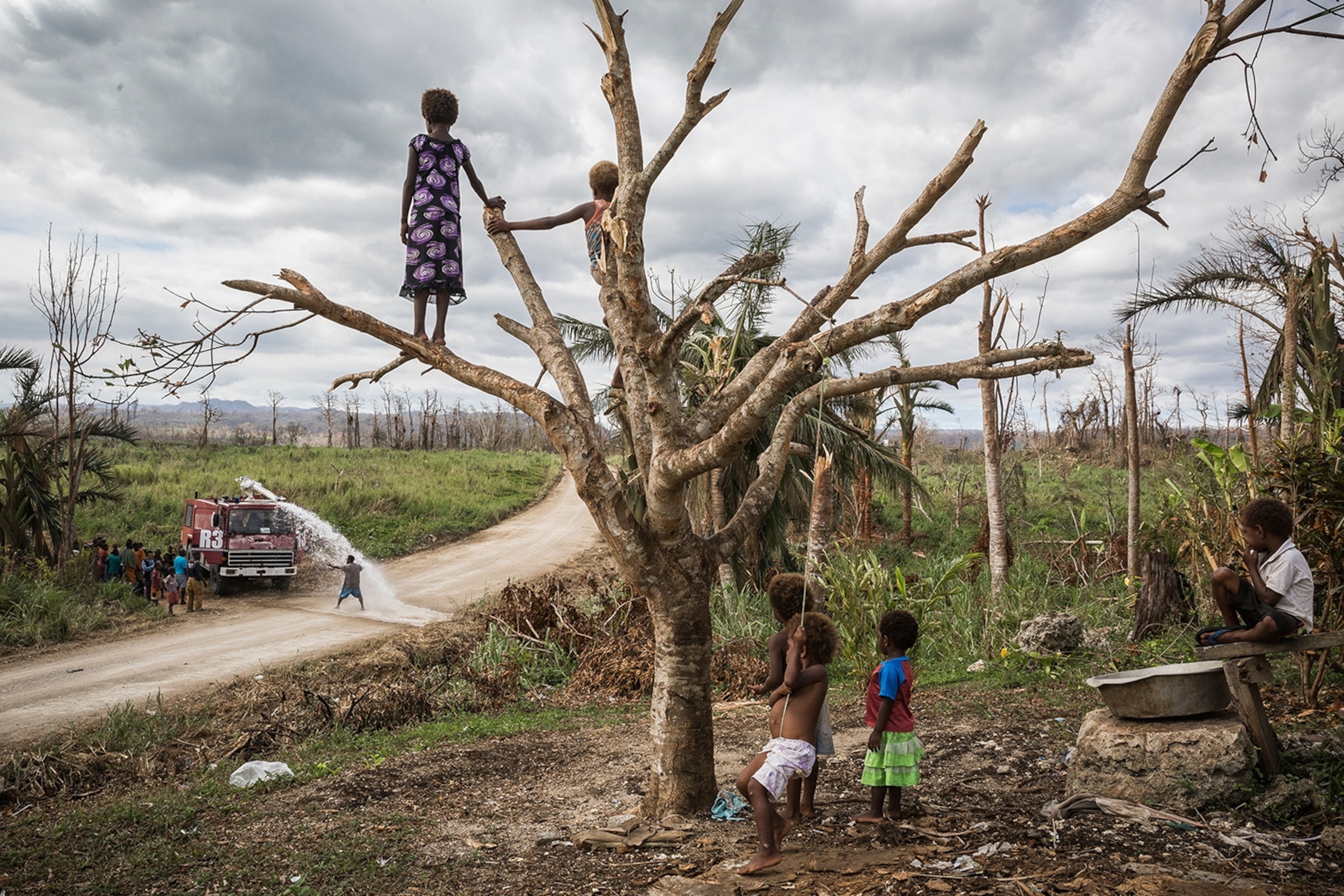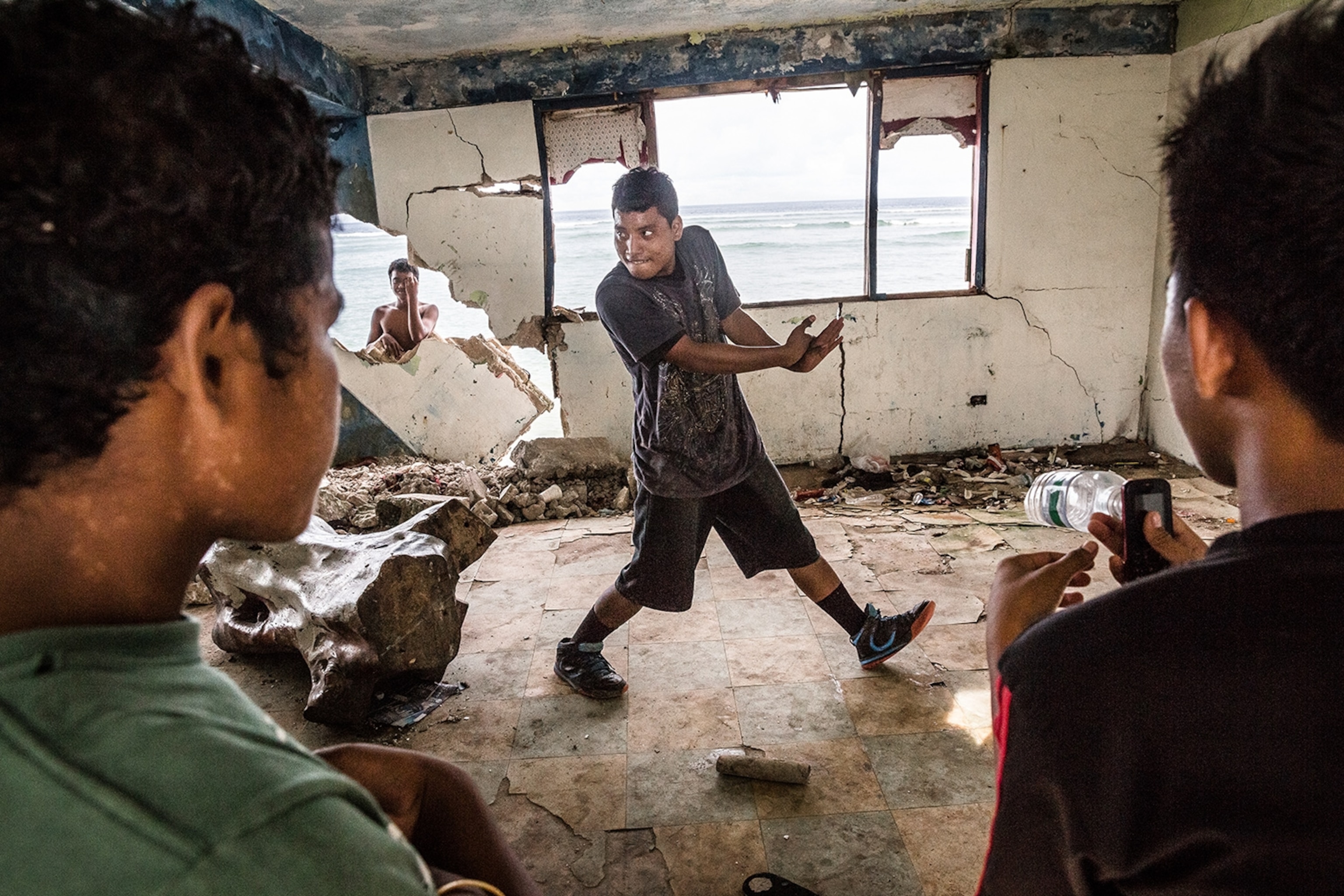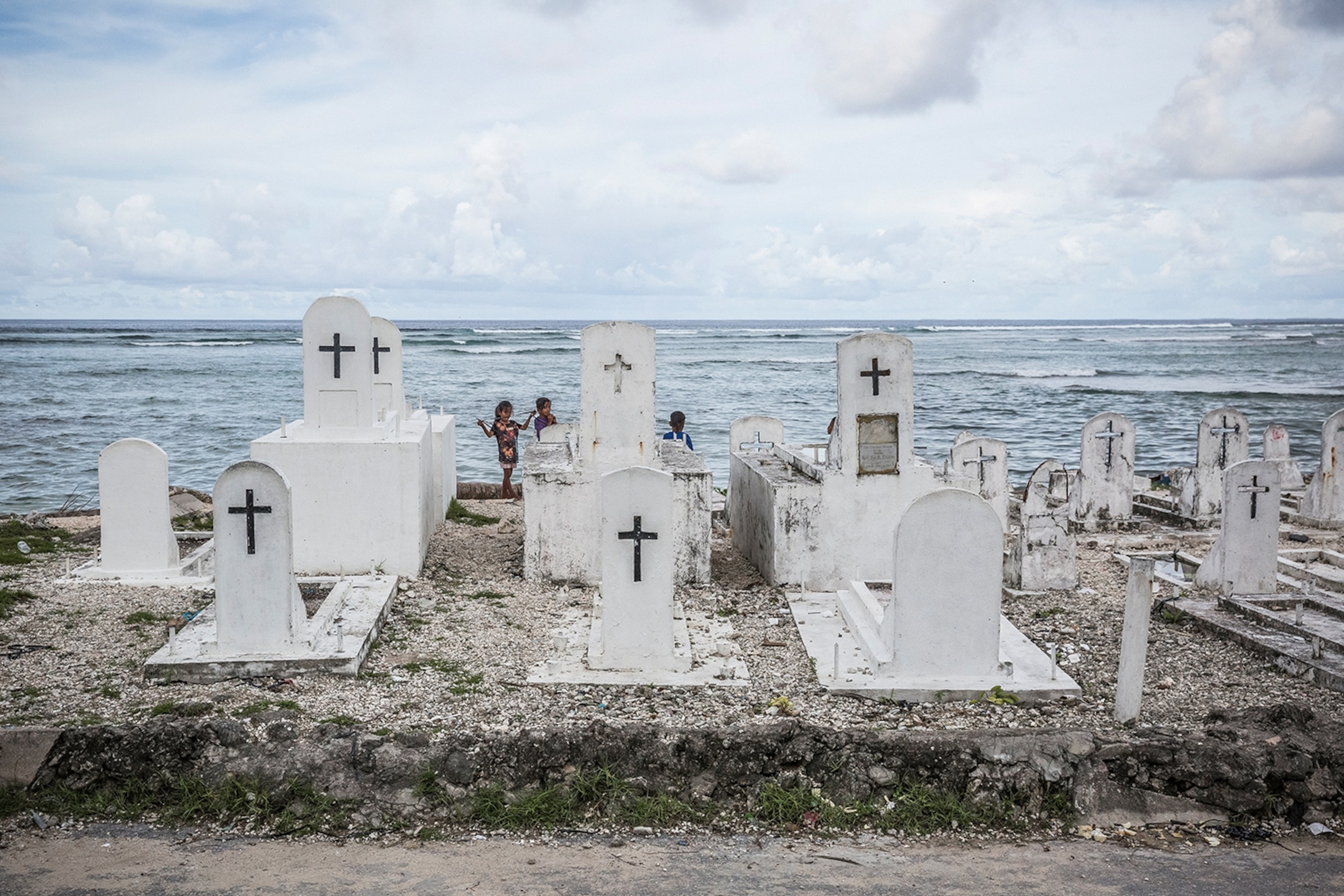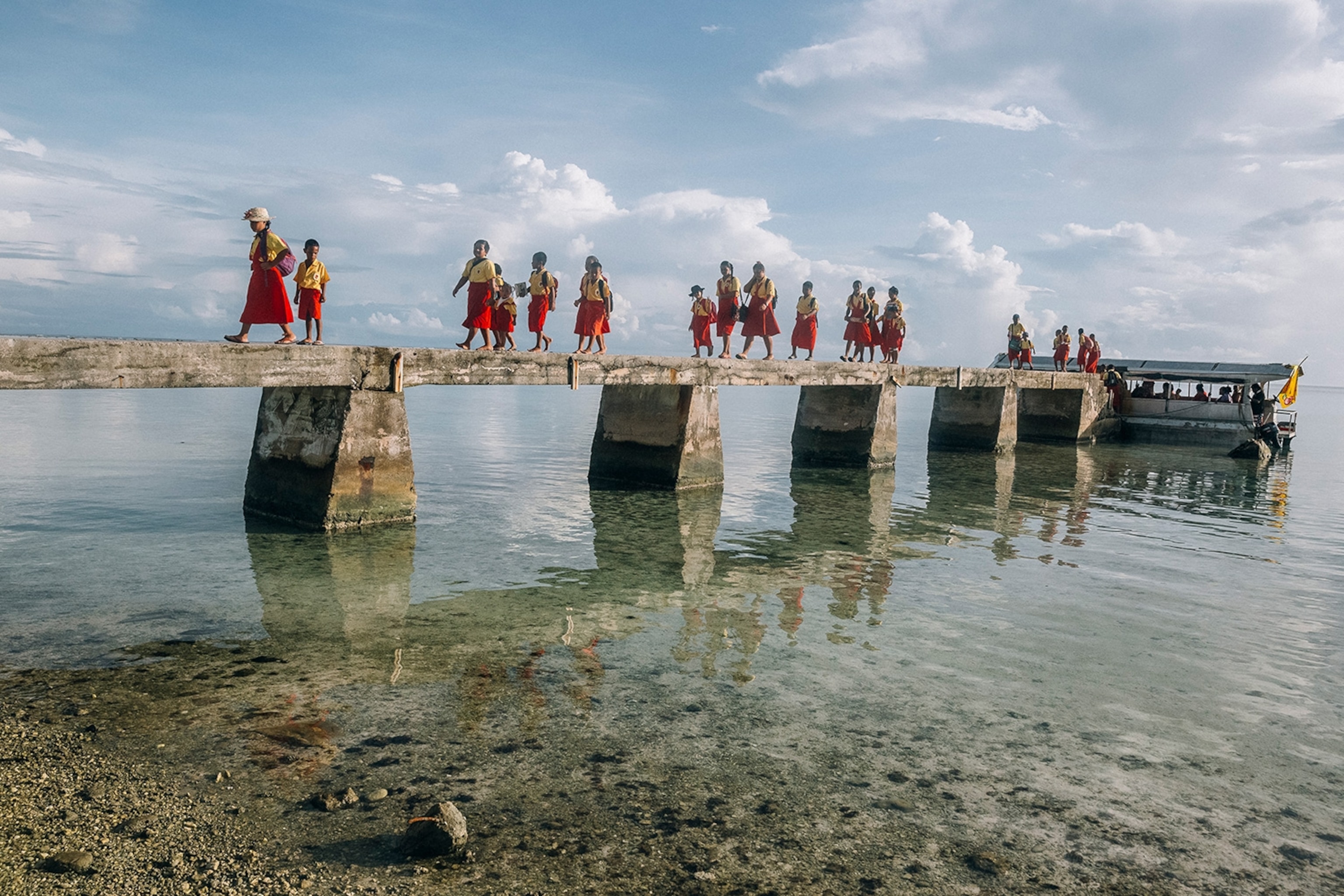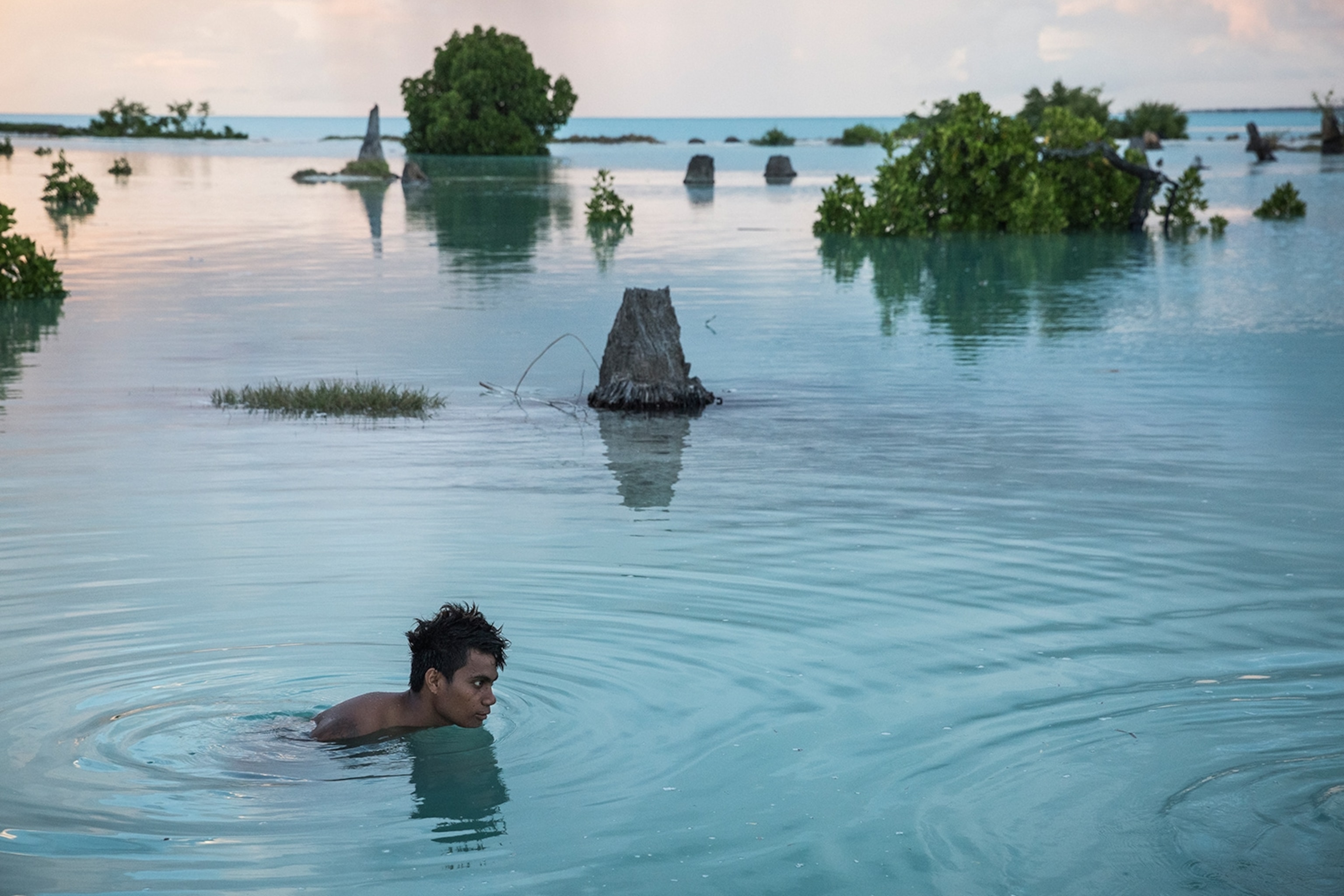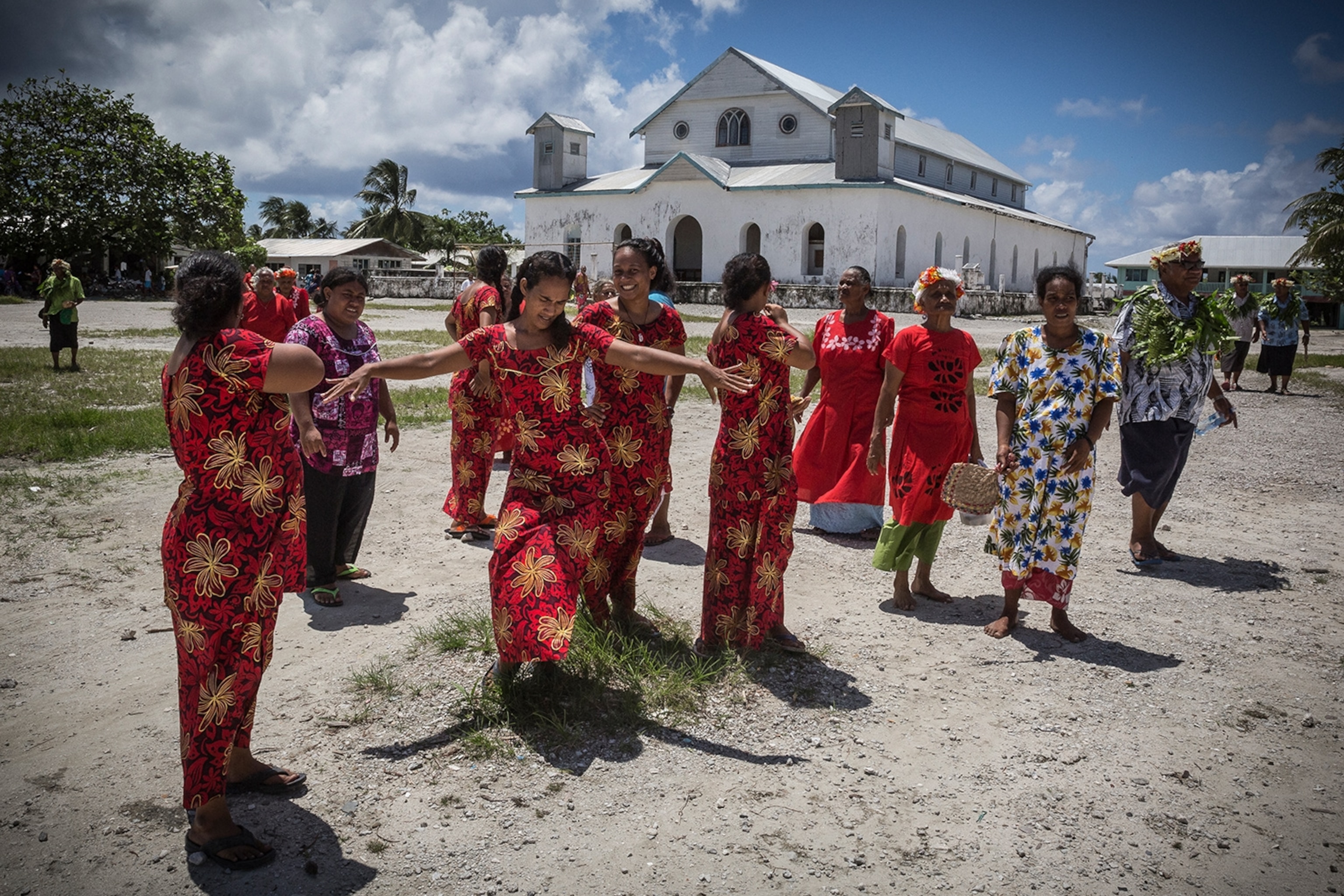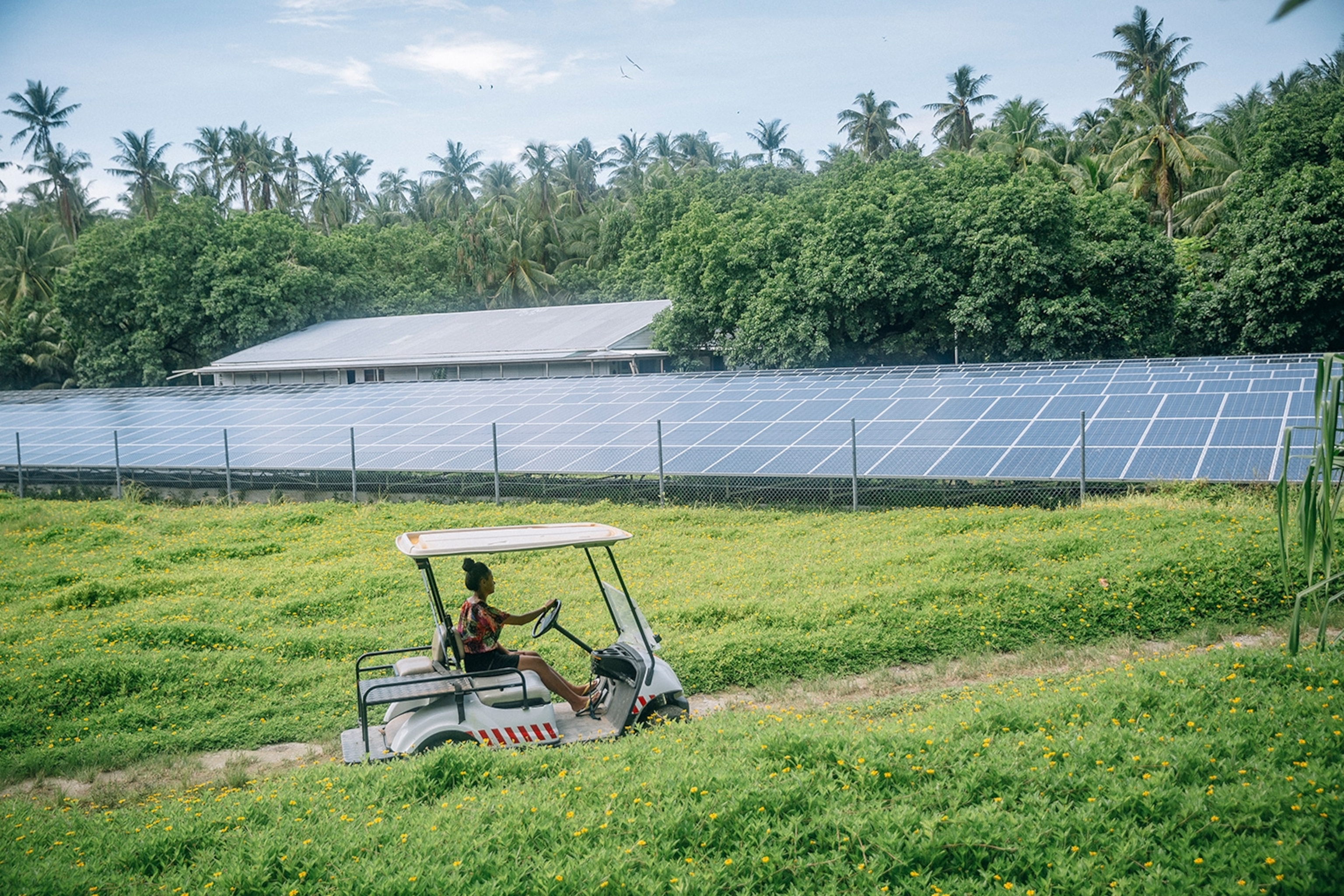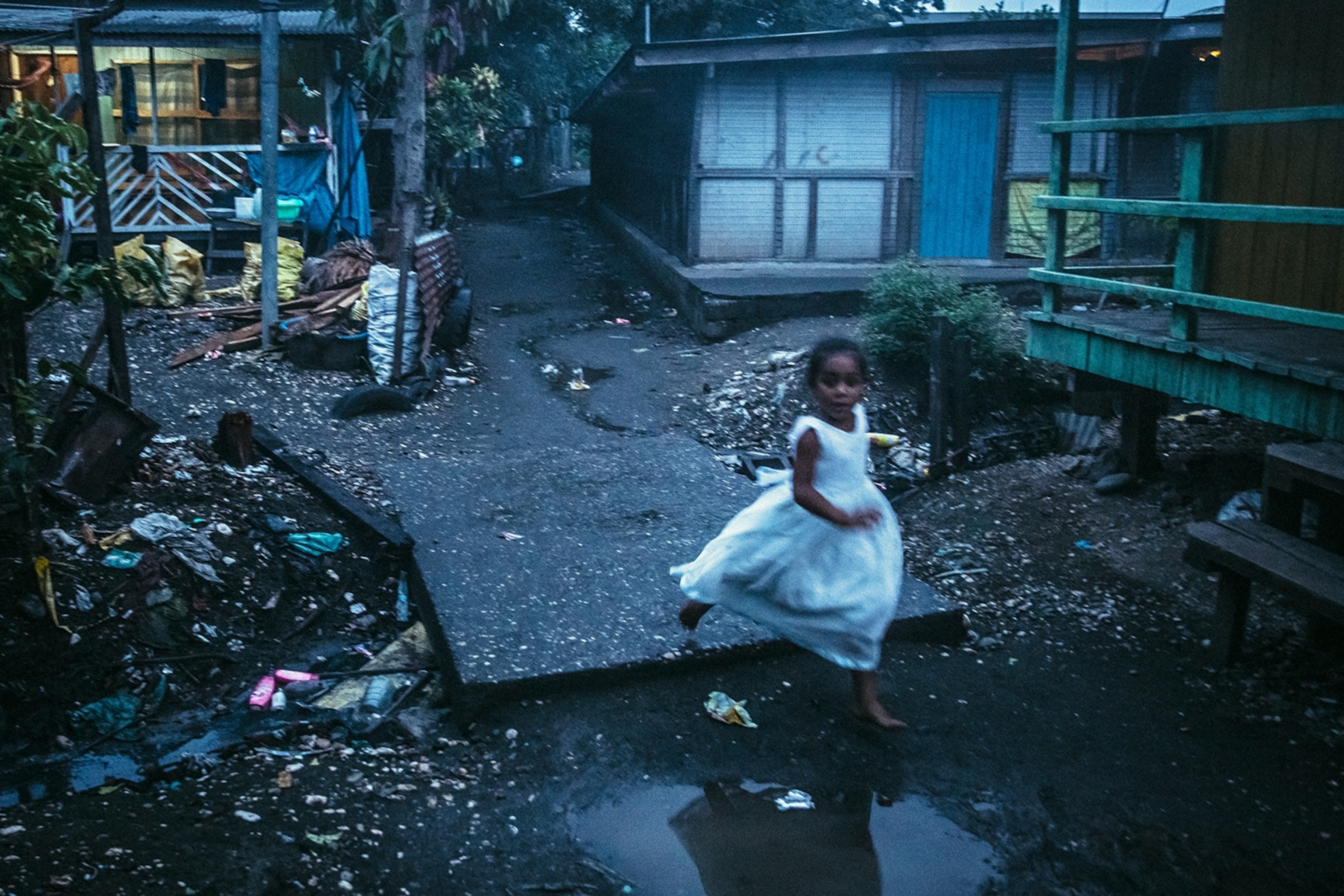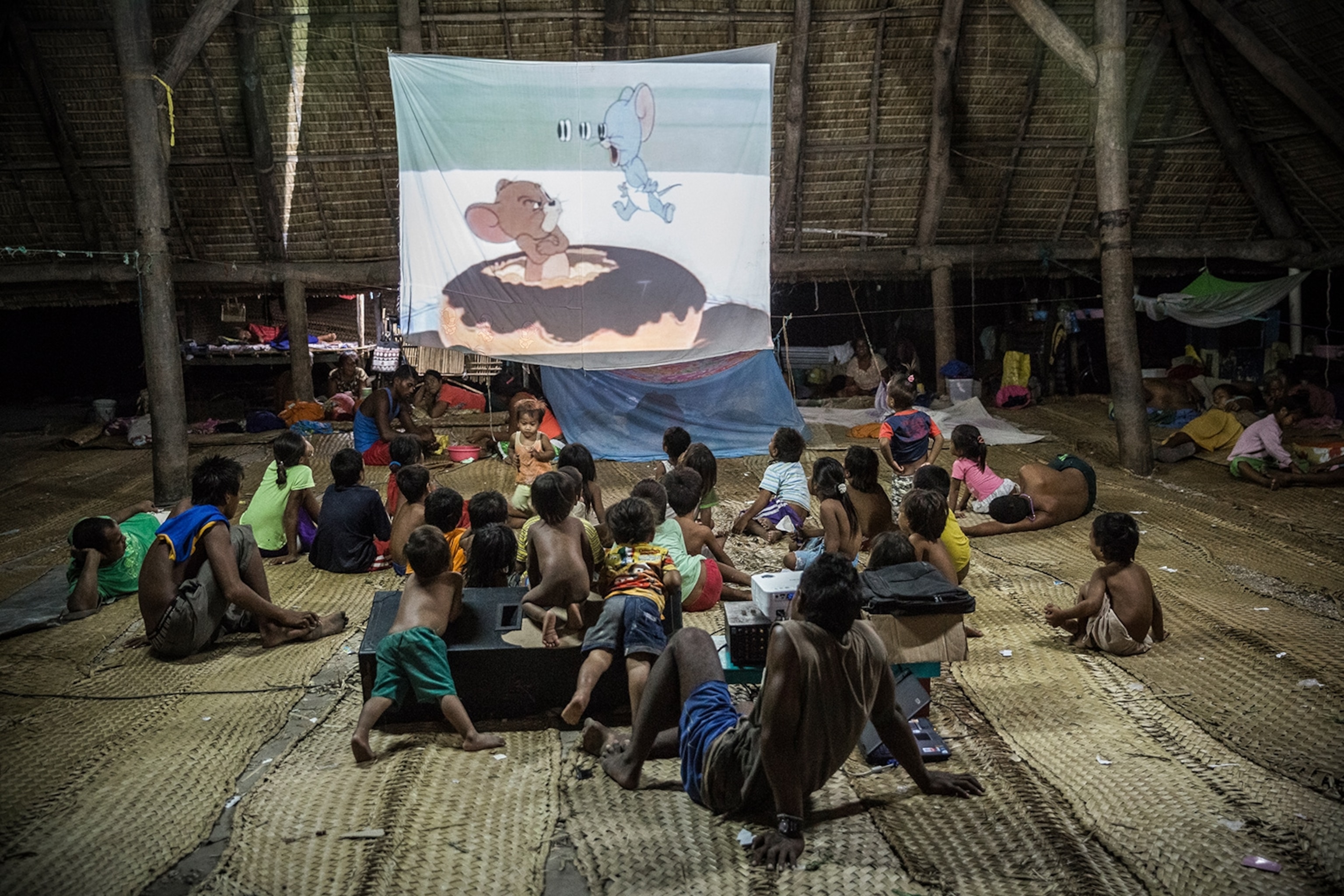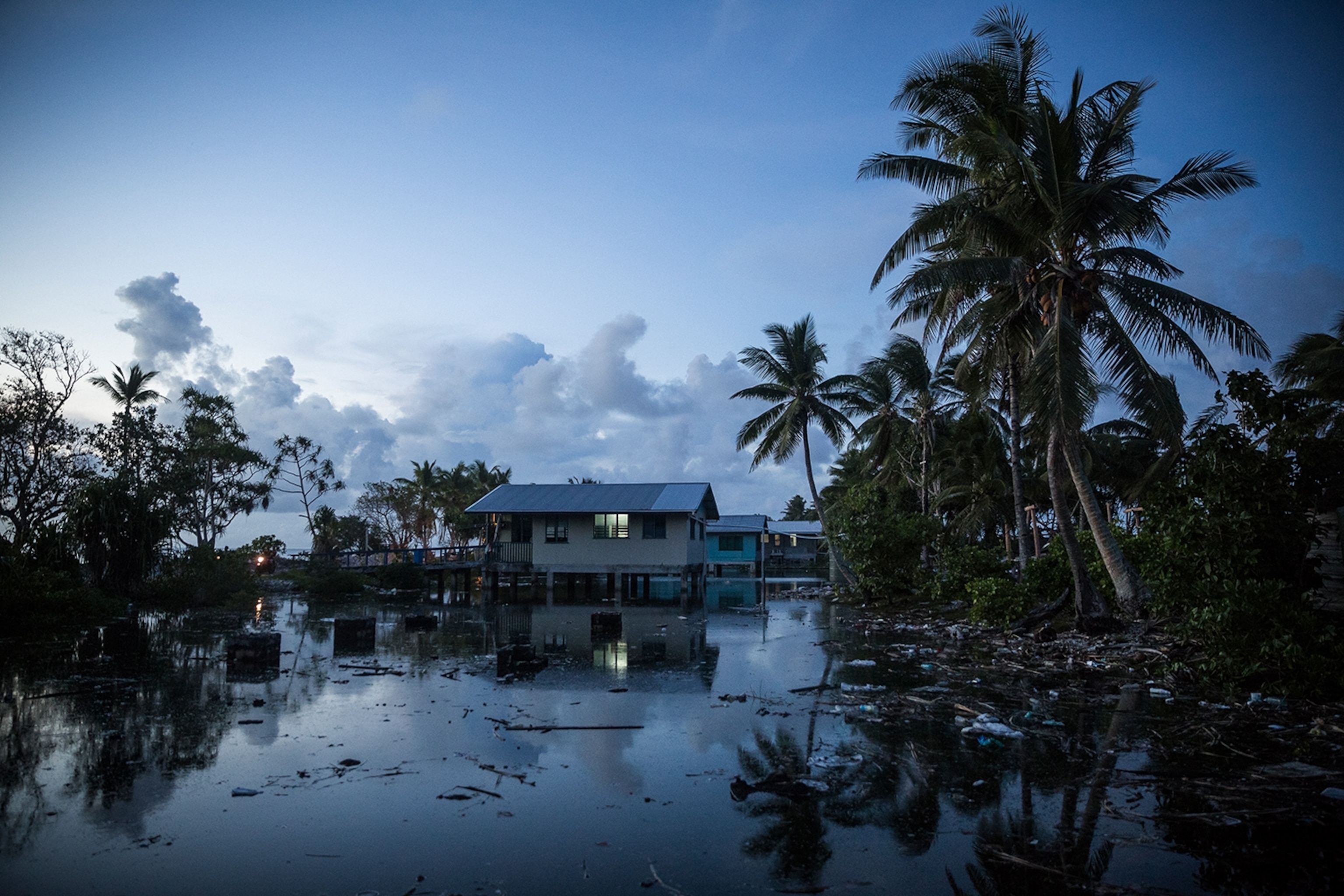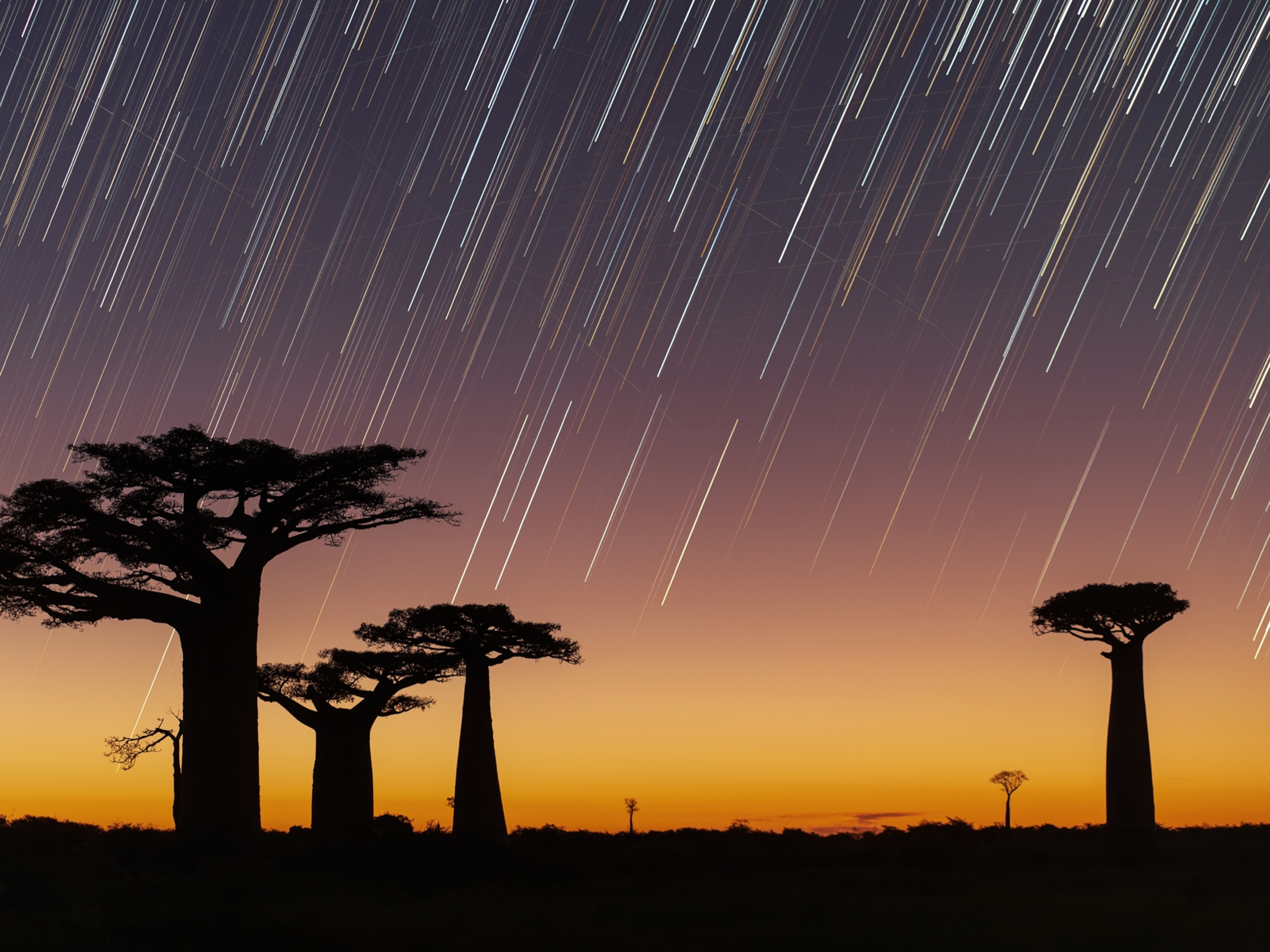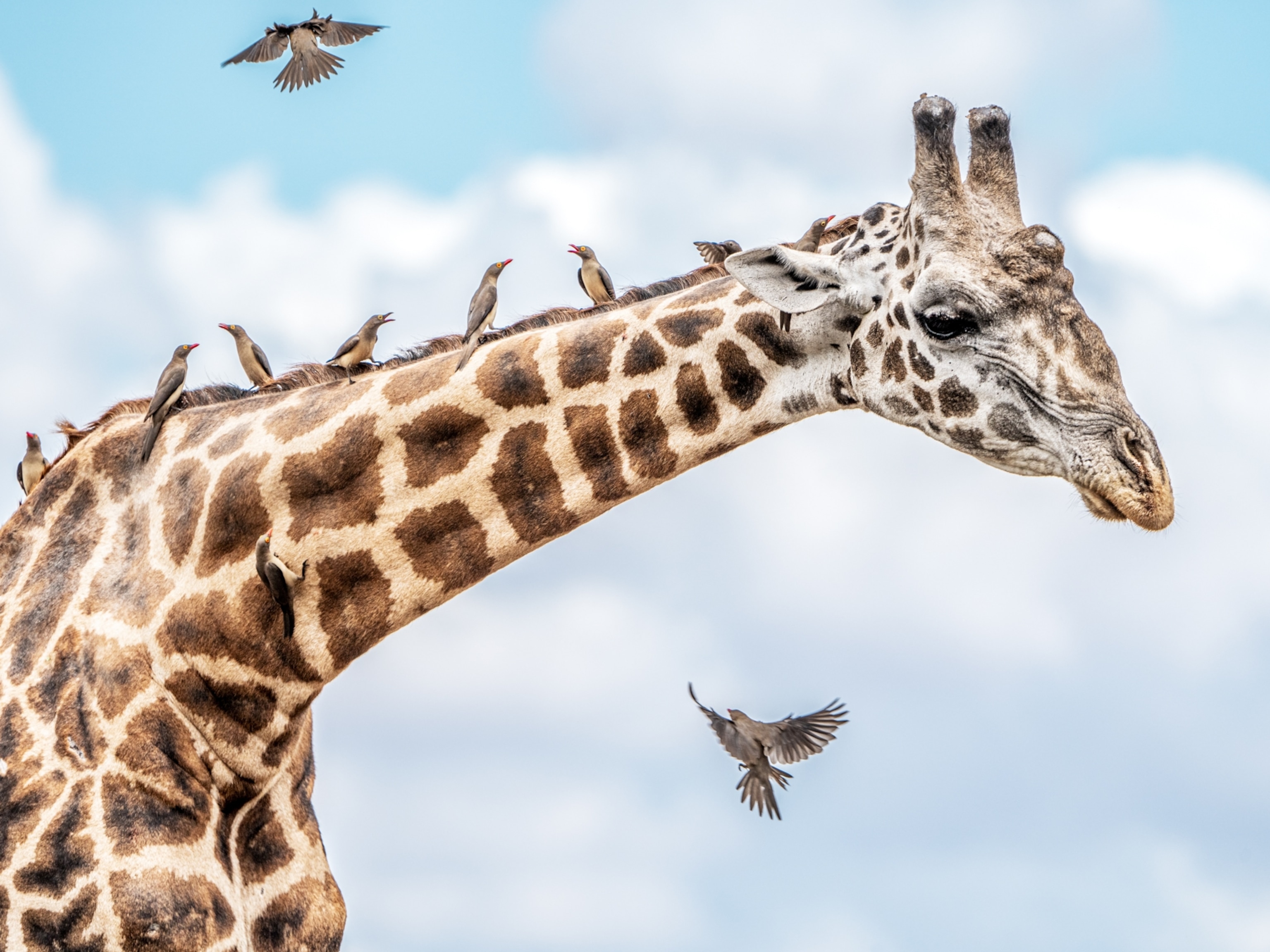See How Pacific Islanders Are Living With Climate Change
For indigenous communities in the Pacific, adapting to the impacts of rising seas, fierce storms, and other challenges has become a necessity.
Global temperatures hit record highs the past three years in a row—and the people of the Pacific have been feeling the effects.
The Pacific region has experienced devastating cyclones, storm surges, coral bleaching, and irregular rainfall patterns. Sea level rise threatens low-lying islands, where salt water infiltrates drinking water wells and kills staple food crops, as well as damaging property.
Photographer Vlad Sokhin has been documenting environmental changes in Pacific communities since 2013. Sokhin focuses on indigenous communities who are adapting to challenges created primarily by carbon emissions from developed countries, he says.
“In every country I’ve seen effects of global warming and climate change,” he says. “Different countries face different effects. For example, in Guam, the biggest challenge is coral bleaching, but in the last few years, the cyclones have become more intense.”
Abnormally warm ocean waters can bleach corals, which occurs when stressed corals expel the colorful algae living within their tissues. Coral bleaching threatens the reef ecosystem, but increasingly intense cyclones and tropical storm surges pose immediate danger to island residents.
Two category-five cyclones hit the Pacific in the past two years: Cyclone Pam hit Vanuatu in March 2015, and Cyclone Winston hit Fiji in February 2016. Winston was the strongest tropical cyclone to hit the Southern Hemisphere in recorded time.
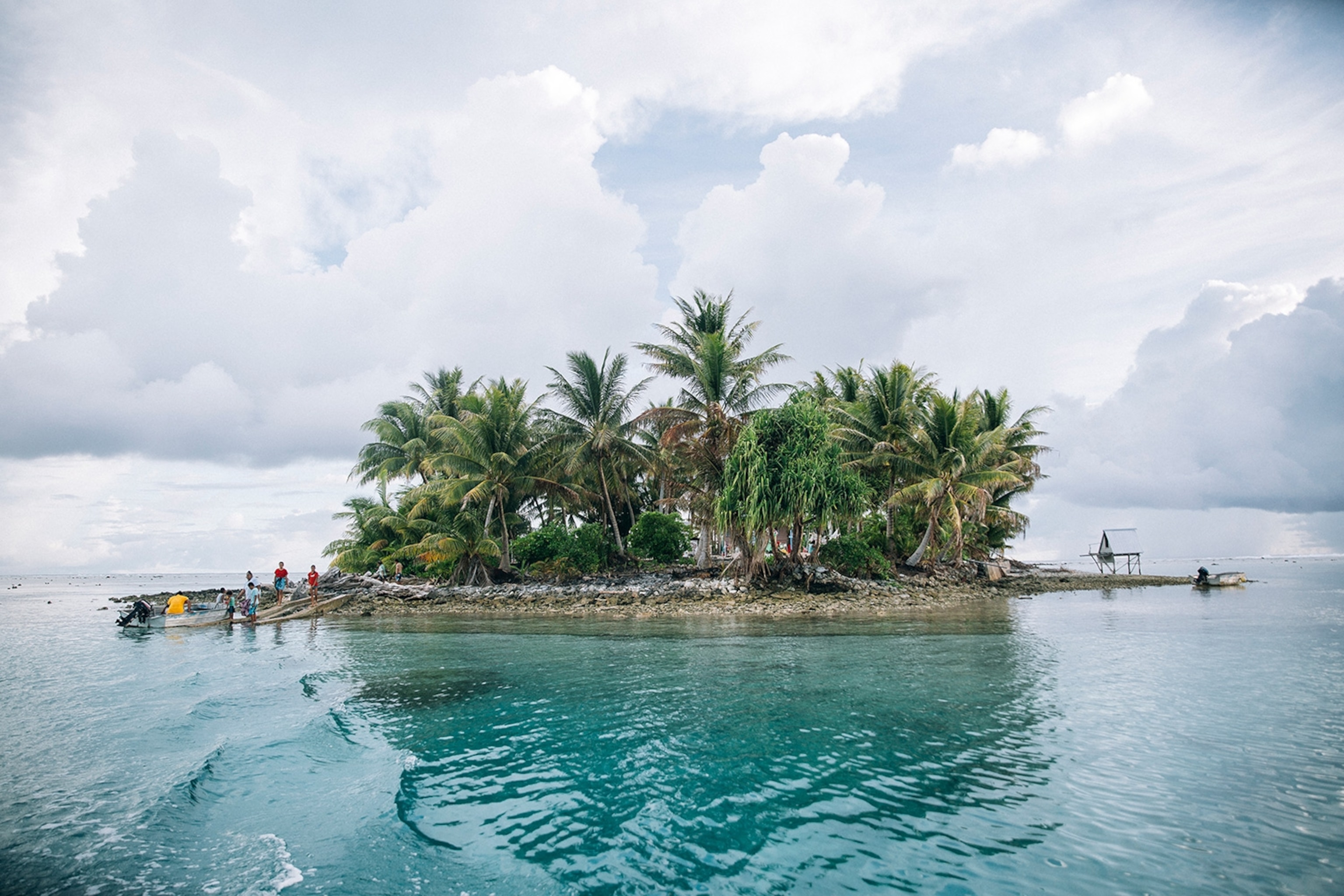
Low-lying nations further north in the Central Pacific are particularly vulnerable to sea level rise. Most of these islands are coral atolls, or ring-shaped reef islands that lie only a few meters above sea level. Some communities in Kiribati, Tuvalu, and the Marshall Islands are surrounded by water at high tides, Sokhin says.
Sea level rise in combination with man-made changes to the shoreline can exacerbate coastal erosion. But some low-lying reef islands have actually grown in size despite rising sea levels. Whether the islands disappear or not, local communities face difficult living conditions at high tides.
When the water rises around these islands, it can disturb graveyards, infiltrate drinking water wells, and kill staple food crops like breadfruit trees or taro. Even with these challenges, most people do not want to leave the land their families have lived on for generations.
“The most resilient people that I’ve ever met traveling around the world live in the Pacific. People still try to cope and adapt, and sometimes the conditions are really harsh. But most people say, ‘This is our land, we need to find a solution.’”
In Tokelau, a small Polynesian community north of Samoa, communities are preemptively adapting to climate change. A community of about 350 residents on Fakaofo, one of Tokelau’s three atolls, enclosed their entire islet in five-meter high concrete walls, Sokhin says.
“When I was approaching, it looked like a fortress in the middle of the Pacific,” he says. Tokelau, a territory of New Zealand, is also entirely solar powered, he says. “It’s a model of how other countries and other atoll nations could manage their land and adapt to conditions.”
